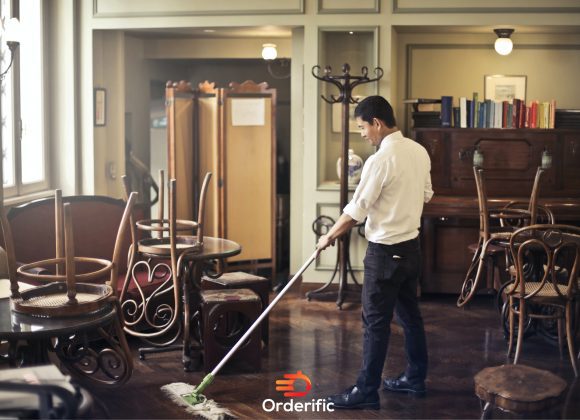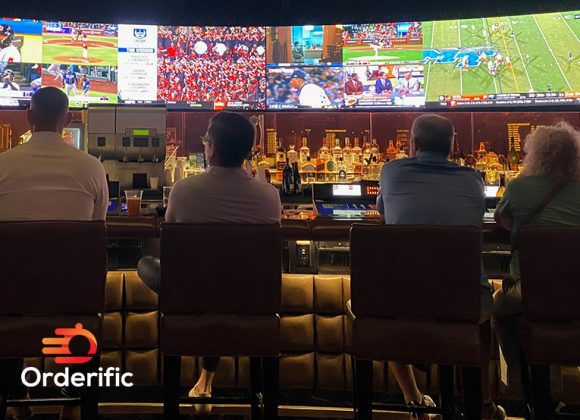Introduction
In the rapidly evolving hospitality industry, incorporating virtual hotel tours into hotel booking systems has become a significant game-changer. These immersive experiences, often known as 360 virtual tours or VR tours, offer prospective guests an unprecedented understanding of what they can anticipate, promoting increased direct bookings. Potential guests can take a 360 degree view of a hotel room in New York or Las Vegas without leaving their home, making Google a remarkable tool for marketing campaigns. These tours provide an interactive way for customers to explore amenities and make informed decisions. Hoteliers find that a well-constructed Matterport virtual tour can be a compelling lure, bringing the experience of travel to the potential customer. Consequently, this technology is set to redefine the future trajectory of hotel management and the hospitality industry at large.
What Are Virtual Hotel Tours?
Virtual Tours are a revolutionary technology in the hospitality industry, particularly useful for hotels. Both potential guests and hoteliers benefit from this innovative tool. When a prospective guest embarks on a tour, it enables an immersive experience that goes beyond static images or textual descriptions. They get to explore hotel rooms, amenities, and other facilities through 360-degree photos, which provide a comprehensive perspective of what’s on offer.
The Mechanics Of A Virtual Tour
A hotel virtual tour typically involves a series of 360-degree photographs, or a 3D model, blended seamlessly to create an immersive virtual reality. The participants – or viewers – navigate through the hotel using hotspots, points of interest that link different areas together. This interactive virtual tour can transport potential guests into a hotel room in New York or Las Vegas, all without moving from their couch.
Virtual Tour And Hotel Booking
Virtual tours significantly influence the booking decisions of potential guests. The interactive experience, coupled with the opportunity for direct bookings, simplifies the decision-making process. More often than not, a prospective guest who takes a virtual tour is more likely to convert into a direct booking.
Virtual Reality And Social Media
The integration of virtual reality hotel tours on social media platforms enhances the reach of these tours. Potential customers can easily share their unique experiences with their network, leading to increased visibility for the hotel.
In conclusion, the strategic use of a virtual tour, whether it’s a Matterport virtual tour or a Google virtual tour, within a hotel’s marketing campaigns can positively impact the hotel’s bookings and overall guest experience. The hospitality industry is rapidly evolving, and the incorporation of virtual tours is a testament to that progress.
Why Are Virtual Tours For Hotels Effective In Attracting More Guests?
The Effectiveness Of Virtual Tours In Attracting More Hotel Guests
Virtual tours are an innovative tool that has proven to be highly effective in compelling hotel bookings. The key to their efficacy lies in the immersive experience they provide. Imagine a potential guest in New York or Las Vegas being able to embark on a virtual tour of a hotel room from the comfort of their own home. They can explore the amenities on offer, navigate through the hotel using interactive hotspots, and get a comprehensive 360-degree view of the premises. This level of interaction is more engaging than static images or textual descriptions, and it offers the prospective guest a realistic sense of the hotel’s atmosphere and services.
Enhancing Guest Experience With Virtual Reality
In addition to the standard virtual tour, many hotels are now employing virtual reality hotel tours to enhance the guest experience. These VR tours take the interactive virtual tour to another level, allowing potential guests to virtually step inside the hotel room. Whether it’s a Matterport virtual tour or a Google virtual tour, this technological tool holds the power to create an impressive, immersive experience that encourages direct bookings.
The Power Of Social Media And Virtual Tours
The integration of virtual tours into social media platforms significantly increases the reach of these tours. Potential customers can quickly share their virtual tour experiences with their network, thus increasing visibility for the hotel. It’s a powerful marketing strategy that has seen many hotels experience an increase in bookings.
In conclusion, virtual tours are a potent tool in the hospitality industry. They provide potential guests with a realistic, immersive experience of a hotel that static images or descriptions simply cannot match. Whether the prospective guest is in New York or Las Vegas, they can explore and experience the hotel in a unique way, ultimately leading to increased bookings for the hotel. By incorporating virtual reality and integrating these tours with social media platforms, hotels can significantly enhance their marketing campaigns and guest experiences.
Benefits Of Virtual Tours For Hotels

Showcase Amenities
Virtual tours are an effective tool for hotels to accurately showcase the variety and quality of amenities they offer. By allowing potential guests to virtually explore restaurants, swimming pools, fitness centers, spas, and more, hotels can provide a realistic and comprehensive view of their facilities. This level of detail is often unachievable through traditional photographs or descriptions. The immersive nature of a virtual tour allows guests to navigate freely through different areas, giving them a sense of what it would be like to use these amenities. This enhanced interactive experience can greatly influence booking decisions, with guests having a clear expectation of what they are paying for. Therefore, virtual tours not only enhance customer experience but also act as a powerful marketing tool for hotels, potentially leading to increased bookings and a competitive edge in the hospitality industry.
Boost Sales
Virtual tours serve as a valuable tool in boosting hotel sales. The immersive, realistic experience they offer gives potential guests a compelling preview of what the hotel offers. This interactive approach allows a hotel to showcase its unique selling propositions, be it luxurious rooms, top-notch facilities, or stunning views. Prospective guests can explore these features at their own pace and convenience, which often results in increased direct bookings. Furthermore, virtual tours can significantly reduce the time taken to make a booking decision by providing a comprehensive view of the hotel’s offerings. They enable potential customers to visualize their stay, thereby creating a strong emotional connection that motivates them to proceed with a booking. Virtual tours also reduce booking cancellations, as they align customer expectations with reality. In short, incorporating tours into a hotel’s marketing strategy can significantly enhance its sales performance.
Competitive Advantage
In the highly competitive hospitality industry, having a unique edge is essential. Virtual tours offer just that, serving as a powerful differentiator that sets a hotel apart from its competitors. Adopting this innovative technology demonstrates a hotel’s commitment to providing a superior customer experience, from the booking stage to the actual stay. Virtual tours enable potential guests to immerse themselves in the hotel’s environment and facilities, fostering a deep connection that static images or text cannot replicate. This novel, interactive experience can be a decisive factor in attracting customers and influencing their booking decisions. Moreover, it portrays the hotel as trend-conscious and tech-savvy, appealing to a wider, more diverse demographic, especially the younger, tech-savvy generations. Thus, integrating virtual tours into the hotel booking system can provide a substantial competitive advantage, propelling the hotel to the forefront of the hospitality industry.
Saves Cost And Time
Implementing virtual tours can contribute to significant cost and time savings for hotels. In terms of cost, while the initial setup might require an investment, the return on investment can be substantial, as virtual tours help increase direct bookings and reduce cancellations. By providing a realistic preview of the hotel, guests are less likely to be disappointed and cancel their reservations. Furthermore, virtual tours save considerable time for both the hotel and the potential guests.
For the hotel, virtual tours can reduce the number of inquiries about the property and its amenities, as guests can get most of the information they need from the tour. For guests, the ability to explore the hotel at their own pace, from the comfort of their own home, saves time and makes the decision-making process easier and more efficient. Thus, the integration of virtual tours into the hotel booking system can drive significant efficiency and cost-effectiveness, further reinforcing the value of this innovative technology in the hospitality industry.
Marketing And Brand Building
Virtual tours are a valuable component of a hotel’s marketing and branding strategy. They offer a dynamic, immersive way to showcase a hotel’s accommodations, amenities, and distinguishing features. Potential guests are able to virtually “walk” through the hotel, gaining a detailed understanding of the layout, decor, and overall ambiance. These realistic, interactive tours go beyond traditional advertising, offering a unique experience that can significantly influence a potential guest’s perception of the hotel and their booking decision.
The use of virtual reality technology further amplifies the impact of these tours, providing a unique, innovative experience that reinforces the hotel’s brand image as a forward-thinking, customer-focused entity. Furthermore, virtual tours can be integrated into various marketing channels, including the hotel’s website, social media platforms, and online travel agencies, enhancing their reach and effectiveness. By offering a unique, engaging way for potential guests to explore the hotel, virtual tours help in building a strong, compelling brand image that sets the hotel apart in a highly competitive market.
Types Of Hotel Virtual Tours
3D Virtual Tours
Hoteliers can create a 3D model of their property using a digital twin to offer a more realistic and engaging experience to potential guests. These 3D tours allow the viewers to navigate through the hotel as if they were physically there, providing a comprehensive view of the rooms, amenities, and facilities. This interactive experience can greatly influence booking decisions by providing a clear expectation of the stay.
Google Virtual Tours
Google Virtual Tours utilize the technology of Google Street View to provide a 360-degree view of the hotel. These tours are integrated into the hotel’s Google My Business account and can be viewed directly from Google search results, thus increasing visibility and accessibility. Google virtual tours are an effective way to boost the hotel’s online presence and attract more potential guests.
Matterport Virtual Tours
Matterport Virtual Tours offer a seamless, interactive 3D experience. These tours allow viewers to move through the hotel property as if they were actually there. Matterport’s powerful 3D modeling technology helps to create a realistic and immersive virtual environment, enabling potential guests to virtually explore the hotel rooms and amenities in detail.
Each of these virtual tour types offers unique benefits in terms of realism, interactivity, and accessibility. Regardless of the type of tour chosen, the incorporation of this technology into the hotel’s booking system can significantly enhance the guest experience and increase bookings.
How To Create A Compelling Hotel Virtual Tour
Creating a compelling tour involves multiple steps that need to be executed meticulously to ensure maximum interactivity and engagement.
Planning The Tour
First, it’s important to carefully plan the virtual tour route. This includes deciding which areas of the hotel to feature in the tour, such as guest rooms, restaurants, leisure facilities, and other amenities.
Capturing High-Quality Images
Next, capture high-quality, panoramic images of each chosen area. For the best results, consider hiring a professional photographer who specializes in 360-degree photography.
Creating The Virtual Tour
Once the images are ready, use a virtual tour software like Matterport or Google’s Tour Creator to stitch together the images into a seamless, interactive tour.
Adding Interactivity
Enhance the tour interactivity by adding hotspots – clickable areas that display additional information or link to different sections of the tour.
Integration And Promotion
Finally, integrate the virtual tour into your hotel’s booking system and promote it on your website, social media platforms, and Google My Business profile.
A well-executed virtual tour can greatly enhance the guest experience, leading to increased bookings and customer satisfaction.
Where To Display Virtual Tours?
The placement of virtual tours is crucial in maximizing their effectiveness. Here are some key platforms where hotels can display their rooms.
Hotel’s Website
The hotel’s own website is the primary platform for displaying the virtual tour. It can be integrated into the homepage or dedicated ‘accommodations’ or ‘amenities’ pages. This allows potential guests to explore the hotel in detail when considering a booking.
Social Media Platforms
Displaying virtual tours on social media platforms like Facebook, Instagram, and LinkedIn can significantly increase their reach. These platforms also allow users to share the virtual tour with their network, amplifying its visibility.
Google My Business Profile
Google Virtual Tours can be displayed directly on the hotel’s Google My Business profile. This enhances the hotel’s online presence, as the virtual tour can be viewed directly from Google search results.
Online Travel Agencies
Virtual tours can also be shared on Online Travel Agencies (OTAs) such as Booking.com or Expedia. These platforms are frequented by potential guests, making them ideal for showcasing the hotel’s virtual tour.
Choosing the right platforms for displaying your virtual tour can help maximize its impact, leading to increased bookings and improved guest experience.
Conclusion
In an era marked by digital innovation, the introduction of virtual tours in hotel booking systems represents a significant leap forward in enhancing customer experience. So, Virtual tours offer an immersive and interactive visualization of a hotel’s amenities and settings, offering a tangible edge in a highly competitive industry. Furthermore, They serve as a powerful tool for marketing, promoting direct bookings, and building a strong brand image. Various types of virtual tours, such as 3D, Google, and Matterport, each provide unique benefits and can be displayed on multiple platforms for maximum reach. The investment in virtual tours does not only encompass the promise of potential high returns but also represents a commitment to providing superior customer experiences. So, why wait? Contact Orderific today to schedule a demo and harness the power of virtual tours for your hotel.
FAQs
Why offer virtual hotel tours?
Virtual hotel tours enhance customer experience, boost bookings, and give your hotel a competitive edge.
What should be highlighted in virtual hotel tours?
Highlight the key features and amenities of the hotel, such as rooms, restaurants, and leisure facilities.
What is the best way to make a virtual tour online?
Use a professional 360-degree camera or hire a professional photographer and then stitch the images together using a virtual tour software.
Are virtual tours the future of marketing property?
Yes, virtual tours are a growing trend in property marketing.
What is a 360 Virtual Tour?
A 360 virtual tour is an immersive, interactive experience that allows viewers to explore a location virtually in a full 360-degree view.













